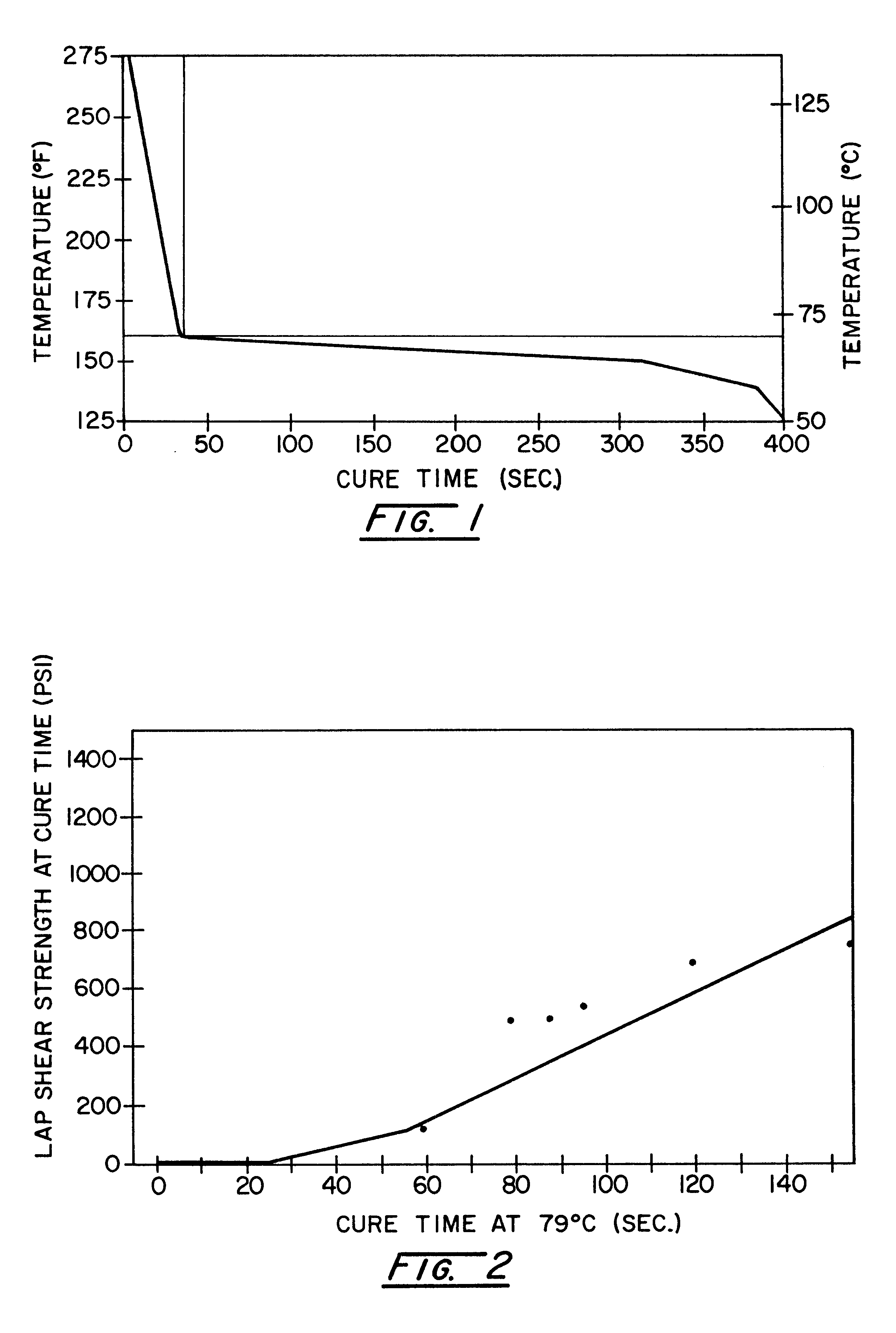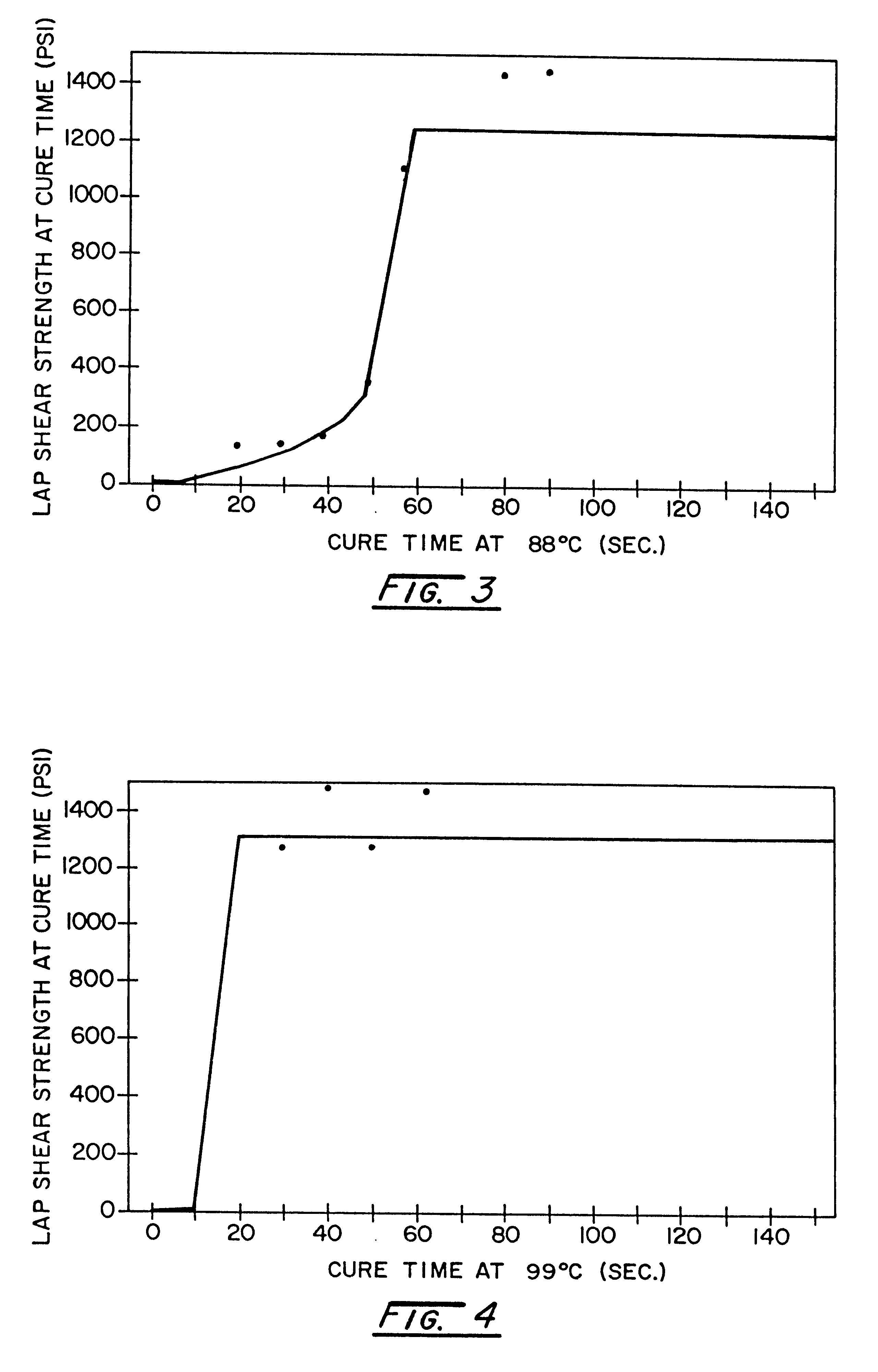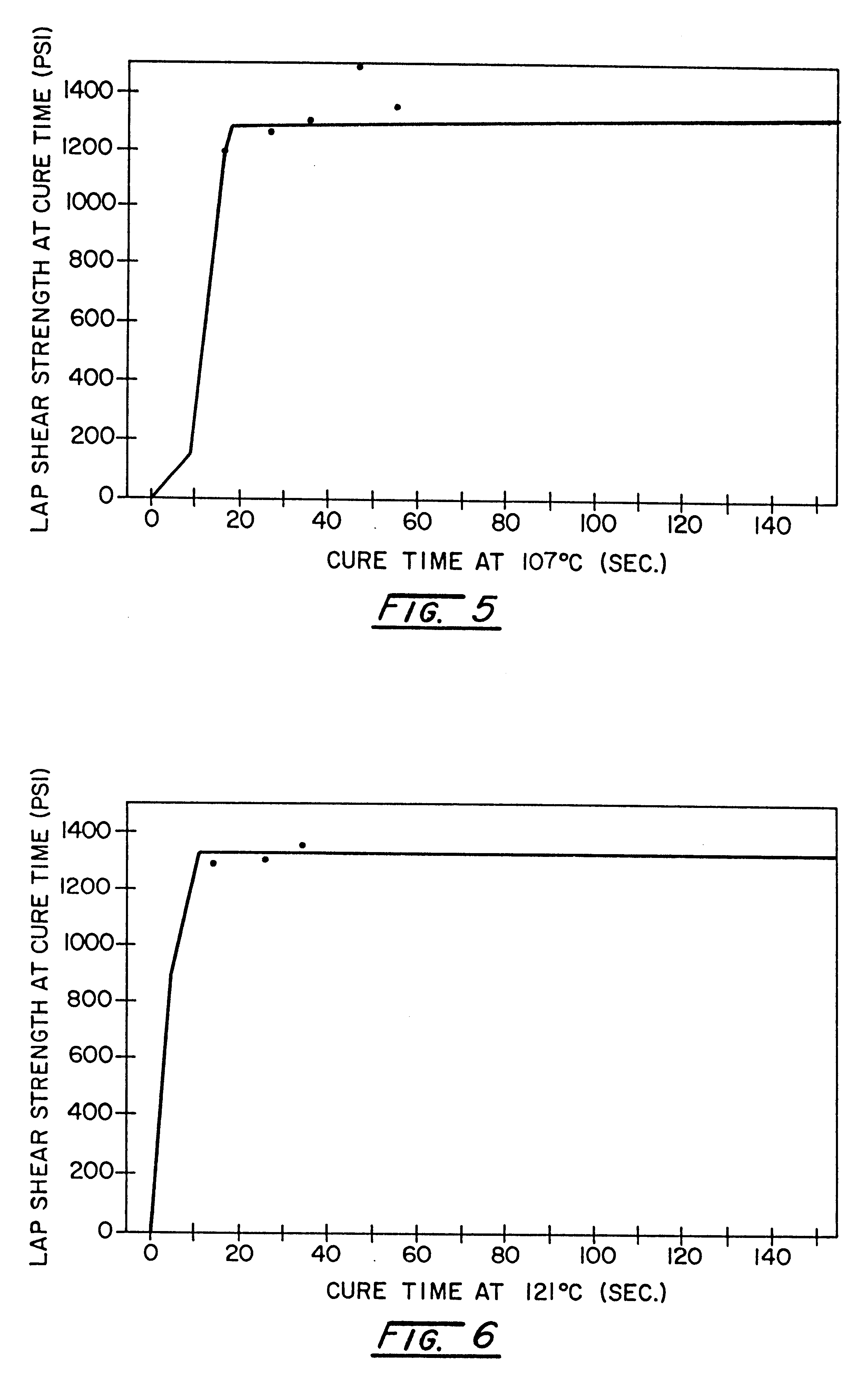Polyurethane reaction system having a blocked catalyst combination
a polyurethane and catalyst technology, applied in the direction of adhesive types, adhesive processes with surface pretreatment, chemistry apparatus and processes, etc., can solve the problems of shortening the pot life, prohibitively long time, and little commercial interest of the system, and achieves long open time, long open time, and fast cure time
- Summary
- Abstract
- Description
- Claims
- Application Information
AI Technical Summary
Benefits of technology
Problems solved by technology
Method used
Image
Examples
example 1
To functionally illustrate the preferred class of amine or amine-like catalysts in terms of the desired catalytic effect, the cure characteristics of the inventive adhesive system were determined by a ladder study to obtain the reaction rate of the system at various temperatures. To facilitate the study, a master batch of adhesive composition was prepared as a two-component system comprising a polyisocyanate component and a catalyzed polyol component. The polyisocyanate component was formulated from AROWELD 400 polyurethane prepolymer (Ashland Chemical, Inc.): 45-50% urethane polymer including a diol (Poly G 20-112, polyether diol 1000 MW, Olin Chemical); 40% modified methylenediphenyl isocyanate (Isonate 2143L, Dow Chemical); and 10-15% poly(methylenephenylene)polyisocyanate (Mondur MRS, Miles Chemical). The polyol component was formulated from AROWELD 310 curative (Ashland Chemical, Inc.): 1-10% urethane polymer including an isocyanate (Isonate 2143L, modified methylenediphenyl is...
example 2
To demonstrate the unique synergy between the selected amine or amine-like catalyst and the complexed metal catalyst in the present adhesive composition, a master batch of polyisocyanate and polyol component was formulated as described in Example 1. To aliquots of the polyol component were added various tin and amine-like catalysts, and combinations thereof. These aliquots were then were admixed with portions of the polyisocyanate component at a ratio of about 1:1 and cured at a constant temperature of 121.degree. C. For each of the catalysts or catalyst combinations, both the room temperature open time, i.e., the gel time at 25.degree. C., and the time to cure at a constant temperature of 121.degree. C. were recorded. The following results were recorded.
As the above-tabulated data demonstrate, neither the amine or amine-like catalyst (POLYCAT DBU), nor the complexed metal catalyst (VIC 5054), alone affords both a relatively long open time and a relatively short "on demand" or "trig...
example 3
The versatility of the inventive adhesive system was demonstrated by characterizing its post cure strength build. Again, a master batch of a polyisocyanate component and a catalyzed polyol component was formulated as described in Example 1. The components were mixed in a static mixer and dispensed at a volumetric ratio of 1:1 onto 2.54 cm.sup.2 areas of 10.16 cm by 2.54 cm E-coated steel coupons. A second steel coupon was placed over the adhesive-coated coupons to form lap shear specimens having a 1-inch by 1-inch overlap joint. The specimens were placed in an oven for curing at five selected temperatures, 79.degree. C., 88.degree. C., 99.degree. C., 107.degree. C., and 121.degree. C., and several cure times ranging from 10 seconds to 3 minutes. To end the cure time, the samples were quenched in water to slow any further reaction. The lap shear strengths of the samples at each temperature and for each cure time were obtained by tensile testing on an Instron testing machine. Duplicat...
PUM
| Property | Measurement | Unit |
|---|---|---|
| Fraction | aaaaa | aaaaa |
| Percent by mass | aaaaa | aaaaa |
| Percent by mass | aaaaa | aaaaa |
Abstract
Description
Claims
Application Information
 Login to View More
Login to View More - R&D
- Intellectual Property
- Life Sciences
- Materials
- Tech Scout
- Unparalleled Data Quality
- Higher Quality Content
- 60% Fewer Hallucinations
Browse by: Latest US Patents, China's latest patents, Technical Efficacy Thesaurus, Application Domain, Technology Topic, Popular Technical Reports.
© 2025 PatSnap. All rights reserved.Legal|Privacy policy|Modern Slavery Act Transparency Statement|Sitemap|About US| Contact US: help@patsnap.com



